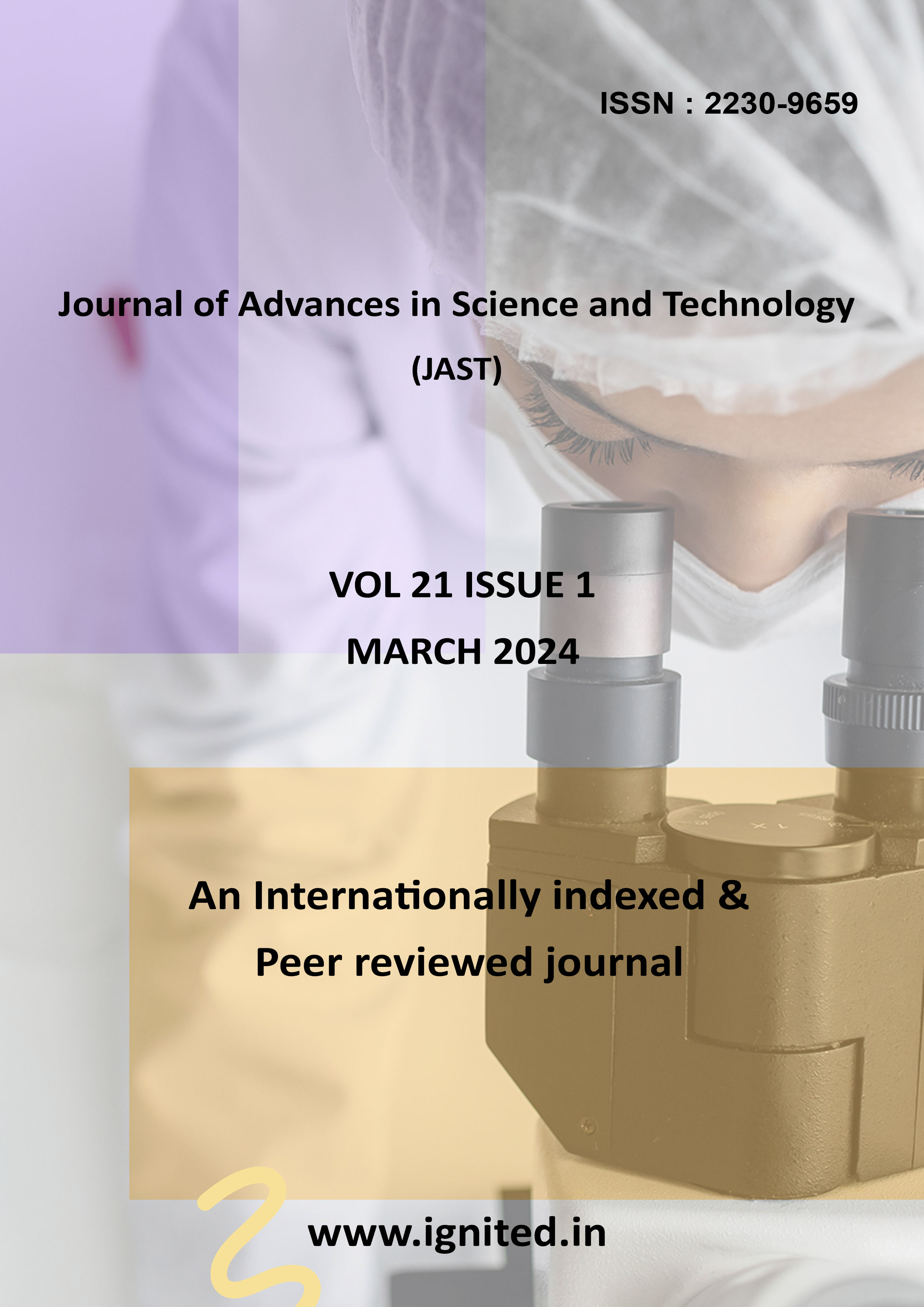Reliable electronic front-end circuits for permanent, non-invasive health monitoring in biomedical wearables
Main Article Content
Authors
Abstract
Developing reliable electrical front-end circuits is crucial for biomedical wearable devices to offer long-term, non-invasive health monitoring. The digital health monitoring system's main interface with the human body is these circuits, which enable accurate bio signal acquisition, amplification, filtering, and digitisation. Thanks to advancements in energy-efficient signal processing, flexible electronics, and low-power analogue front-end (AFE) designs, modern biomedical equipment is far more efficient and simpler to wear. This project aims to develop new circuit designs that can integrate biopotential, temperature, and photoplethysmography (PPG) sensors to constantly monitor vital indicators such heart rate, temperature, oxygen saturation, and electrocardiogram (ECG) data. Efforts were made to optimise power consumption, noise performance, and signal quality in order to ensure long-term usage without frequent charging. We also take a look at several innovative materials and system-on-chip (SoC) solutions to demonstrate how they may work with skin-conformal or textile-based platforms. Modern, user-friendly, and mobile personalised healthcare apps are made possible by these front-end circuits, which offer wireless transmission and real-time data processing. The reliability and biocompatibility of the circuits are assessed for long-term usage, highlighting their significance in preventative and remote health monitoring systems.
Downloads
Article Details
Section
References
- Moscone, D., Venema, K., & Korf, J. (1996). Ultrafiltrate sampling device for continuous monitoring. Medical and Biological Engineering and Computing, 34(4), 290–294.
- Barold, S. S. (2003). Willem Einthoven and the birth of clinical electrocardiography a hundred years ago. Cardiac Electrophysiology Review, 7(1), 99–104.
- Rohde, M. M. (1999). Portable modular diagnostic medical device (U.S. Patent No. 5,876,351). U.S. Patent and Trademark Office.
- Poon, C. C., Wong, Y. M., & Zhang, Y.-T. (2006). M-health: The development of cuff-less and wearable blood pressure meters for use in body sensor networks. In Life Science Systems and Applications Workshop, 2006. IEEE/NLM (pp. 1–2). IEEE.
- Paradiso, R., Loriga, G., & Taccini, N. (2005). A wearable health care system based on knitted integrated sensors. IEEE Transactions on Information Technology in Biomedicine, 9(3), 337–344.
- Moy, T., Huang, L., Rieutort-Louis, W., Wu, C., Cuff, P., Wagner, S., Sturm, J. C., & Verma, N. (2016). An EEG acquisition and biomarker-extraction system using low-noise-amplifier and compressive-sensing circuits based on flexible, thin-film electronics. IEEE Journal of Solid-State Circuits, 52(1), 309–321.
- Moy, T., Huang, L., Rieutort-Louis, W., Wagner, S., Sturm, J. C., & Verma, N. (2016). 16.4 A flexible EEG acquisition and biomarker extraction system based on thin-film electronics. In 2016 IEEE International Solid-State Circuits Conference (ISSCC) (pp. 294–295). IEEE.
- Sinha, N., & Yeow, J.-W. (2005). Carbon nanotubes for biomedical applications. IEEE Transactions on Nanobioscience, 4(2), 180–195.
- Lee, J.-H., Kim, J.-H., & Han, M.-K. (2005). A new a-Si:H TFT pixel circuit compensating the threshold voltage shift of a-Si:H TFT and OLED for active matrix OLED. IEEE Electron Device Letters, 26(12), 897–899.
- Lee, S. P., Ha, G., Wright, D. E., Ma, Y., Sen-Gupta, E., Haubrich, N. R., Branche, P. C., Li, W., Huppert, G. L., Johnson, M., et al. (2018). Highly flexible, wearable, and disposable cardiac biosensors for remote and ambulatory monitoring. NPJ Digital Medicine, 1(1), 1–8.
- Bahubalindruni, P. G., Kiazadeh, A., Sacchetti, A., Martins, J., Rovisco, A., Tavares, V. G., Martins, R., Fortunato, E., & Barquinha, P. (2016). Influence of channel length scaling on InGaZnO TFTs characteristics: Unity current-gain cutoff frequency, intrinsic voltage-gain, and on-resistance. Journal of Display Technology, 12(6), 515–518.
- Huang, T.-C., Fukuda, K., Lo, C.-M., Yeh, Y.-H., Sekitani, T., Someya, T., & Cheng, K.-T. (2011). Pseudo-CMOS: A design style for low-cost and robust flexible electronics. IEEE Transactions on Electron Devices, 58(1), 141–150.
- Bahubalindruni, P. G., Tavares, V. G., Barquinha, P., Duarte, C., de Oliveira, P. G., Martins, R., & Fortunato, E. (2013). Transparent current mirrors with a-GIZO TFTs: Neural modeling, simulation and fabrication. Journal of Display Technology, 9(12), 1001–1006.
- Bahubalindruni, P. G. M. (2014). Analog/mixed signal circuit design with transparent oxide semiconductor thin-film transistors (Doctoral dissertation, Universidade do Porto, Portugal).
- Yin, H., Kim, S., Kim, C. J., Park, J. C., Song, I., Kim, S.-W., Lee, S.-H., & Park, Y. (2008). Bootstrapped ring oscillator with propagation delay time below 1.0 nsec/stage by standard 0.5 μm bottom-gate amorphous Ga₂O₃–In₂O₃–ZnO TFT technology. In 2008 IEEE International Electron Devices Meeting (pp. 1–4). IEEE.

